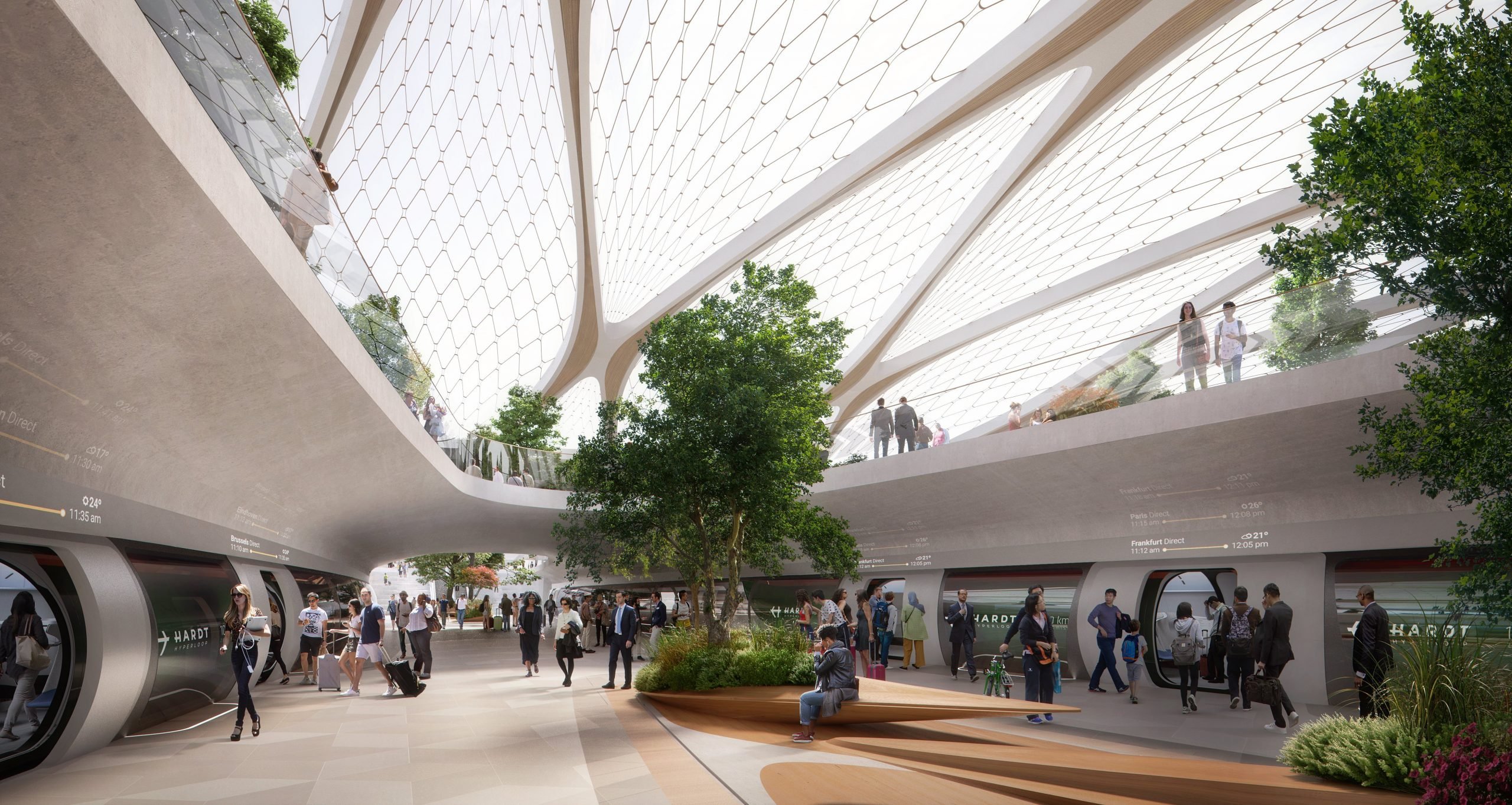
The Province of North Holland commissioned a study into the construction of a pipeline network that will enable the ultra-fast Hyperloop to glide from Amsterdam to neighboring European cities.
The network that was looked at has five routes that should be in full use by 2040. The first one goes from Amsterdam to Leiden and The Hague. The second from Amsterdam to Rotterdam, Brussels (Belgium), and Paris (France). The third from Amsterdam to Utrecht, Eindhoven, Dusseldorf, and Frankfurt (the last two cities are in Germany). The fourth from Amsterdam, Amersfoort, Arnhem, Duisburg, and Dusseldorf (the last two cities are in Germany). The fifth from Amsterdam to Almere, Lelystad, Zwolle, and Groningen (all in The Netherlands).
The projected maximum speed is 700 kilometers per hour.
Get to Paris fast
This speed will ensure that travel times are much shorter compared to a regular train journey. Depending on the route, the Hyperloop will get you there three or four times faster, the study states. This study also concludes that the Hyperloop is two to three times faster than a flight, for example, from Amsterdam to Paris.

The Hyperloop is a means of transport that glides like a capsule through a vacuum-drawn pipeline at lightning speed. These capsules are held up in the air by electromagnetic forces on the pipeline’s upper side. The aim is that the Hyperloop will replace flights over relatively short distances. This will resolve two problems. Firstly, the Hyperloop does not cause any CO2 emissions. In the second place, as yet it’s still not possible to build aircraft that is capable of flying fully electrically (and therefore CO2-free).
This is because their batteries are huge and heavy. Consequently, they take up a lot of space in the aircraft and are a major burden. Also, there isn’t a battery available yet that is so efficient that it has enough energy to stay in the air for a longer period of time. In the long term, it’s expected that only small planes will eventually be able to cover shorter distances with a few dozen passengers. Airbus has announced that it will introduce an electric jetliner in 2030. Presumably, this will be a hybrid, whereby the engine will have to run partly electrically and partly on fuel.
Thousands of passengers
The Hyperloop can transport several thousands of people per journey. It may also be easier to adapt the capacity to the number of passengers and, just like trains, the Hyperloop could be extended with additional carriages.
Hardt Hyperloop will move to Groningen next year where it plans to build a test site. This comprises a three-kilometer long pipeline that will be used to test the technology from 2022 onwards. The intention is that in 2025 goods can be transported via the Hyperloop. From 2028 people will also be able to use it as a means of transportation. Whether this is feasible remains to be seen. It will depend on the willingness of local, national, and European authorities to invest in this kind of network.
There appears to be a great deal of support for this from the northern municipalities in The Netherlands. Groningen, for example, struggles to attract residents and businesses. The distance to the Randstad region is too great. A train journey can easily take three hours. The Hyperloop reduces that journey to just over 45 minutes. The same goes for a city like Zwolle.
Hardt Hyperloop has had the support of the European Commission right from the outset.
Track change technology
Last summer, Violeta Bulc, the former European Commissioner for Transport visited the trial location in Delft. There the young future engineers (most of whom haven’t graduated yet because they spend so much time working on their inventions in order to make Hyperloop a reality) arranged with her that they would regularly talk about establishing the standards Hyperloop needs to meet.
Hyperloop companies in other countries are also involved in this. The idea behind this, according to Mars Geuze, one of the founders of the start-up, is that so much new technology is needed that they will ultimately bundle all the best inventions together. Of all those inventions, Hardt has the most important one in their possession: the technology to be able to change tracks. If you can’t do that, you can’t build a network because you must be able to divert to a way station. Otherwise, each Hyperloop train will have to wait until the Hyperloop train in front of it has left the stop for the next destination. That would be impracticable and could not be made profitable either.
Read more IO articles about the Hyperloop here.

